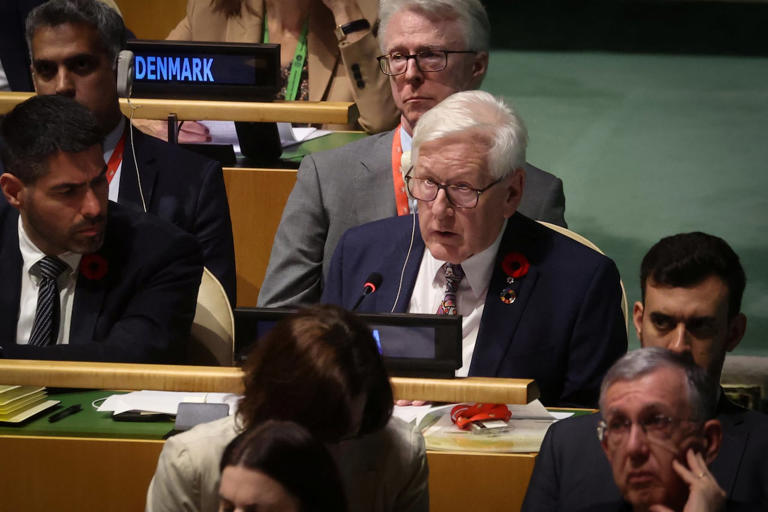UK
Protestors return to Bolton to make feelings known about war in GazaChris Jaffray
Sat, 16 December 2023

The protest took place in Bolton (Image: NQ)
Protesters supporting Palestine have made their feelings known about the war in Gaza at another protest in Bolton town centre.
The latest major conflict in the region broke out after Hamas raided southern Israel on October 7, killing around 1,200 people, mostly civilians, and taking about 240 hostages.
In response, the Israeli forces have killed more than 17,700 Palestinians in Gaza, about two-thirds of them women and children, according to the Hamas-controlled Health Ministry.
Critics of Israel have argued its military actions have been disproportionate and too many civilians have died.
A number of protests have taken place in Bolton since the war began, and in the town centre this afternoon, Saturday, protestors gathered again outside Victoria Square calling for a ceasefire.
Flags and banners with messages stating "end the siege," "free Palestine," and "stop bombing Gaza" were on display.
There were also leaflets calling for a boycott of international drinks brand Coca-Cola due to its operation in the settlement of Atarot.
People chanted "in our thousands in our millions, we are all Palestinians".
Usman, one of the organisers, said: "This is the fourth one we have had in Bolton.
"I have also been to London every couple of weeks.
"I have been on the marches around 10 times.
"There are children dying. Somebody has got to speak up.
"The last couple of marches we have had 2,000 people.
"This was organised in the last three days but we have still got people coming down.
"We are demanding a ceasefire and we want arms to stop being sold."
Another man, who asked not to be named, said: "There are thousands of citizens in Gaza who have been killed by the Israel Defense Forces.
"That is why we are here to demand a ceasefire.
"Whatever rights Israelis have Palestinians should have the same rights."
This week, Prime Minister Rishi Sunak said Britain continues to consider a two-state solution as the “right outcome” to the Israel-Hamas war.
He repeated his call for a “sustainable ceasefire” that involves Hamas no longer firing rockets at Israel and freeing hostages in exchange for more aid into the Gaza Strip.
The Conservative Party leader said the conflict in the Middle East is “incredibly concerning” and that “far too many innocent people have lost their lives”.
He added: “We will continue to support calls for a sustainable ceasefire where hostages are released, more aid can get in, and the rockets, crucially, stop being fired from Hamas into Israel as well.”
The United Nations’ General Assembly on Tuesday voted overwhelmingly to demand a ceasefire in Gaza, a move that was objected to by the US and abstained on by the UK.






















